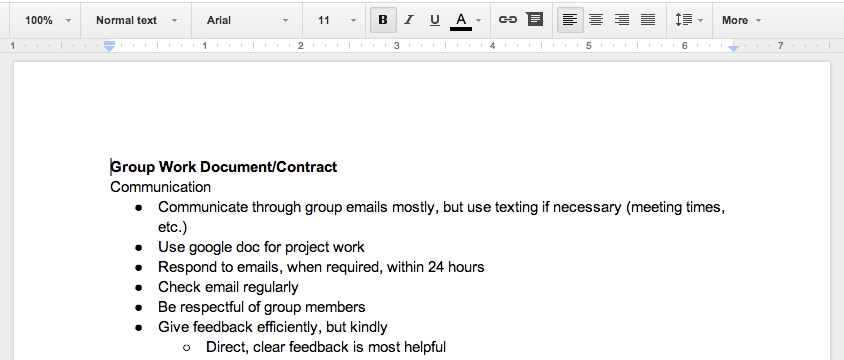To complete a week dedicated to professional communication, Alice Sudlow ‘14 will share some tips and advice of how to navigate group work within the context of client projects!
Students in the CUPID Studio course are now working on client projects, creating materials for organizations around Elon. We’ve split into four groups, with each set of three or four students taking on a different project. But the first day of this exercise focused not on the clients we are working with, but on our groups themselves.
Group work is a dreaded ordeal for many students, and with reason: though professors may assign group projects, they rarely address strategies for working together, and many students become discouraged after working with frustrating or ineffective partners. But the ability to collaborate effectively on a team working towards a common goal is essential both in the college setting and in the work force. Though taking time to understand the nature of group work may seem unnecessary, when a group is unable to work together well the final product, and therefore the client, suffers. Thus before beginning our projects, the CUPID class spent an afternoon discussing the ins and outs of group work and considering strategies that would help ensure success.
1. Know Your Team
Knowing your team does not mean picking your best friends to be part of your group. While this is sometimes an option, in other cases, as in the CUPID course, teams may be assigned by the professor. Once you are placed together, however, get to know each other. Trade contact information, including your names, email addresses and phone numbers. Determine the best ways to keep in touch: for instance, if one person rarely checks their email, texting may be a more reliable method. Discuss the strengths and weaknesses each member brings to the group and consider the best ways to give each other feedback.
2. Define Your Goals
Once you know each other, get to know the project. What have you been assigned to do? Determine what your deliverable will be and how you will measure its success. From there, work backwards to set progress goals. Your team will be able to work together more effectively when you all understand what you are aiming to accomplish.
3. Set a Timeline
Creating a timeline for work to be accomplished is essential for keeping the group on track and ensuring you are prepared to deliver the final product by the deadline. Set small deadlines throughout to mark your progress and help you accomplish goals on time. Pad the schedule with a cushion of extra time throughout, aiming to complete each stage of your project earlier than necessary. That way, if issues arise along the way you’ll have enough time to sort them out without interfering with the final deadline.
4. Outline Best Policies
Prevent conflicts from occurring and address them before they arise by laying down groundwork rules for your team. Discuss policies for attendance, communication and conflict mediation. Compile this information in a contract you can refer back to later on.
As you hone your skills in collaborating with a group, look online for tips from other students and universities. Ashley Ritter of the University of South Florida shares her seven tips here, and Harvard has compiled a thorough guide to organizing group work and navigating conflict here. And know that you are practicing a skill that will serve you well in every sphere, both in college and beyond.



 Follow
Follow